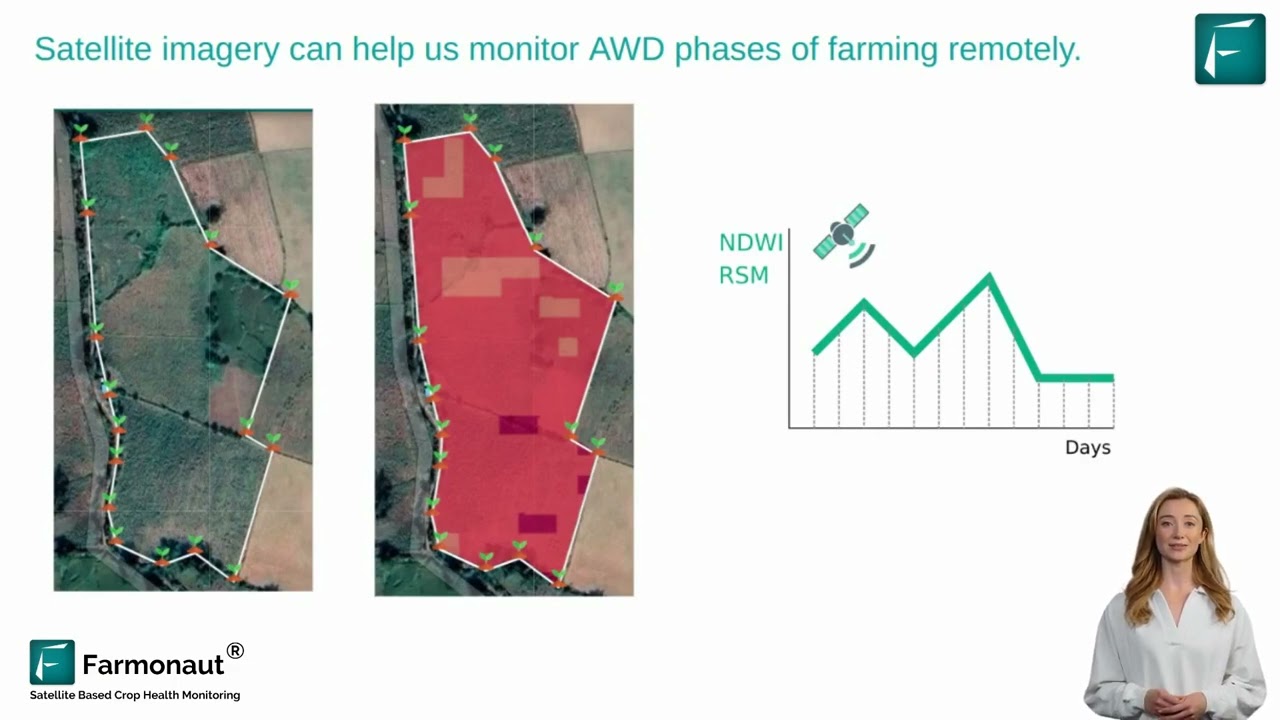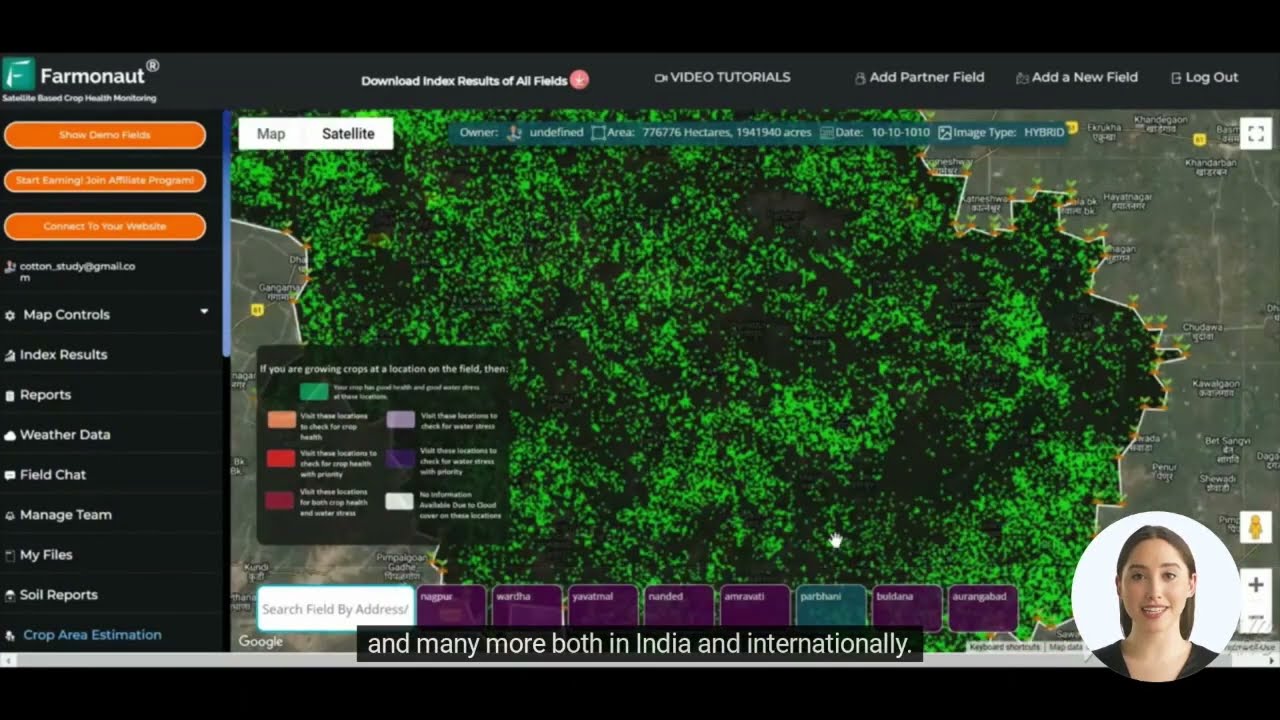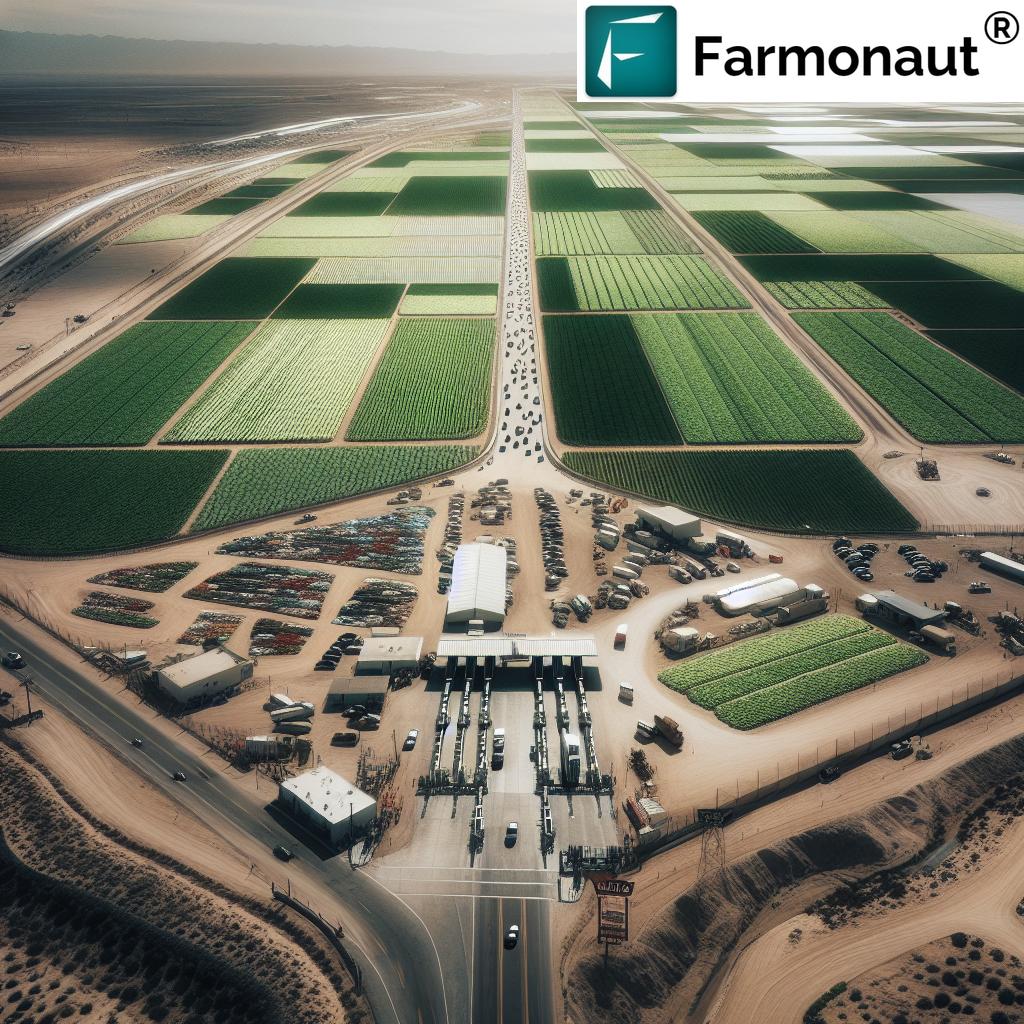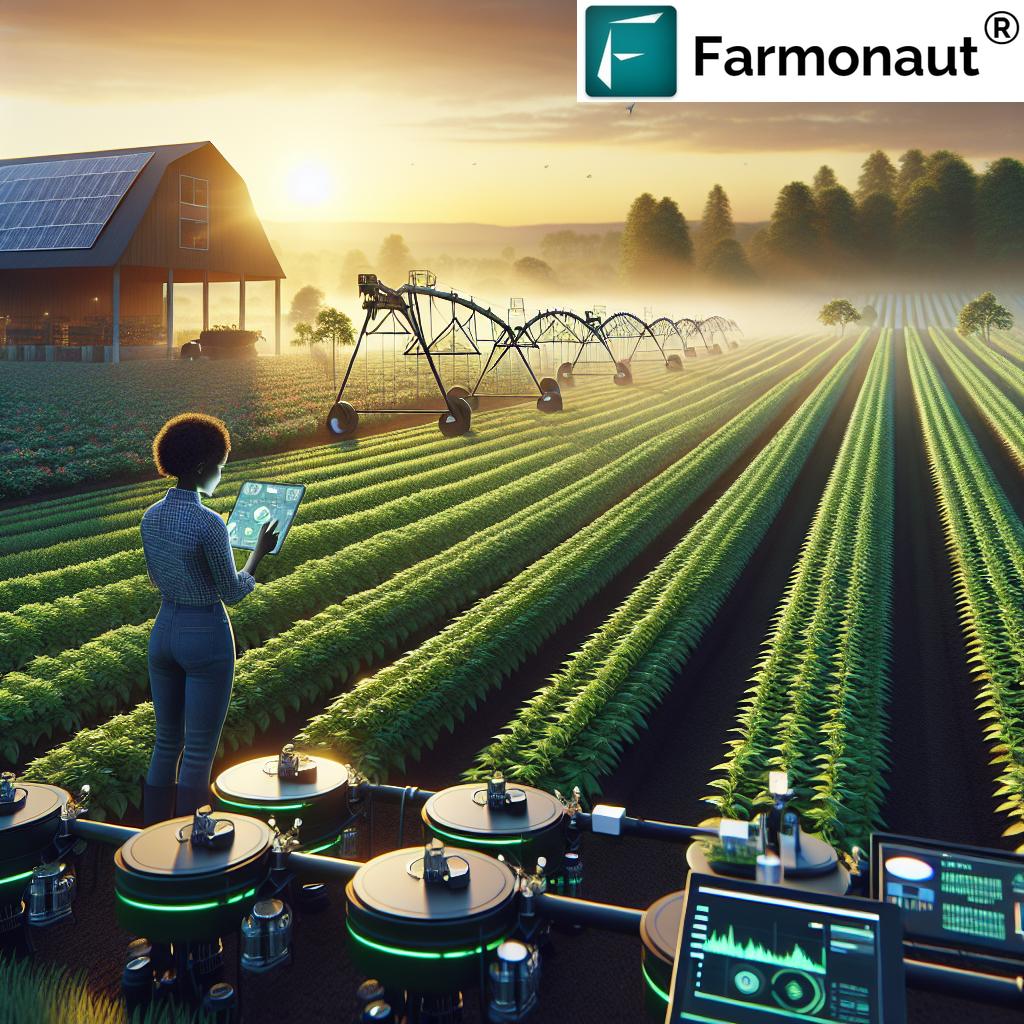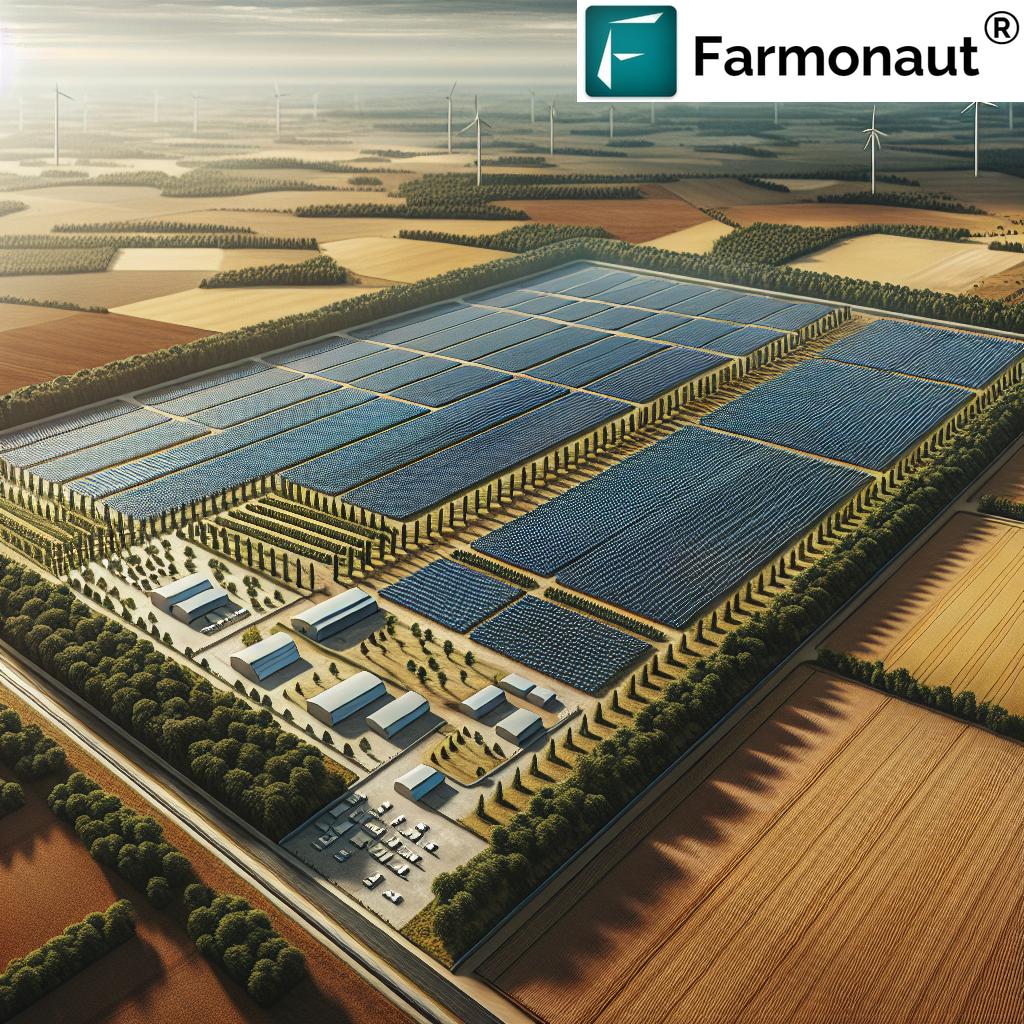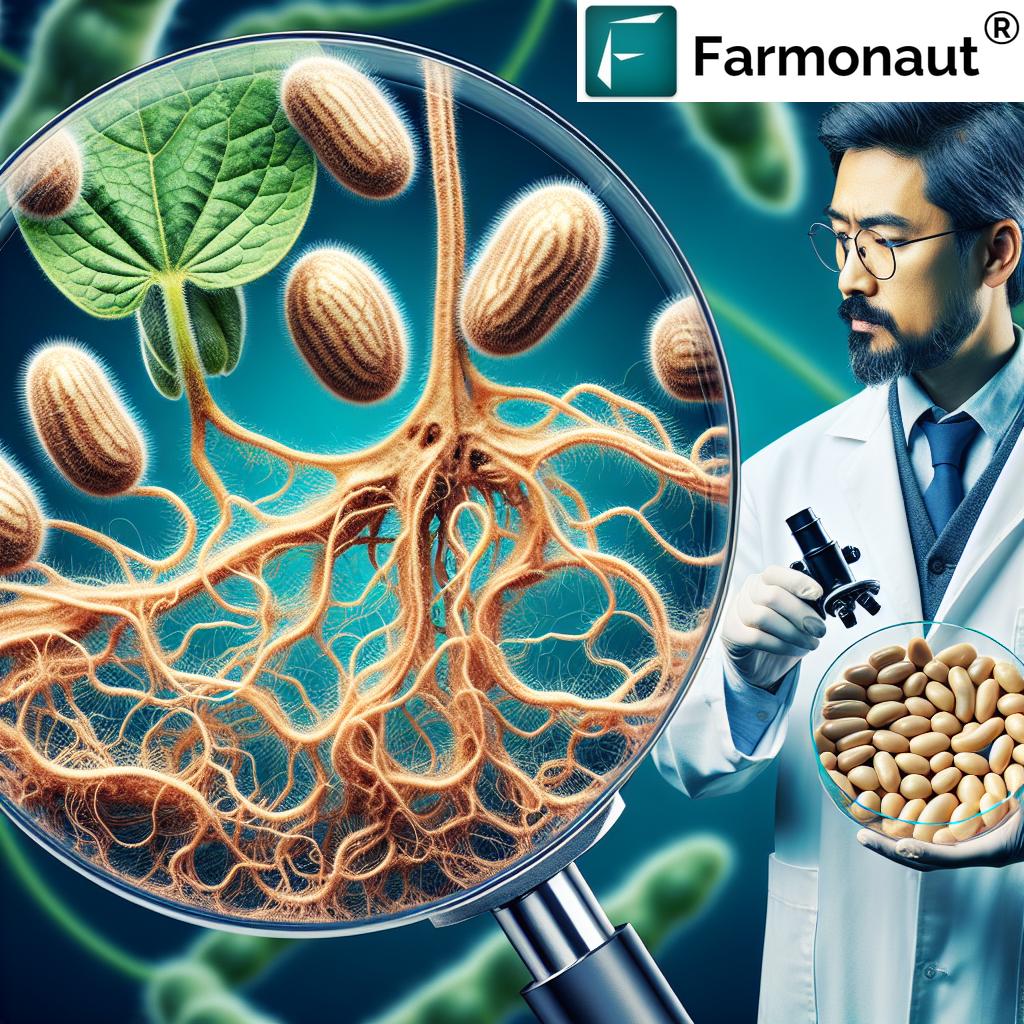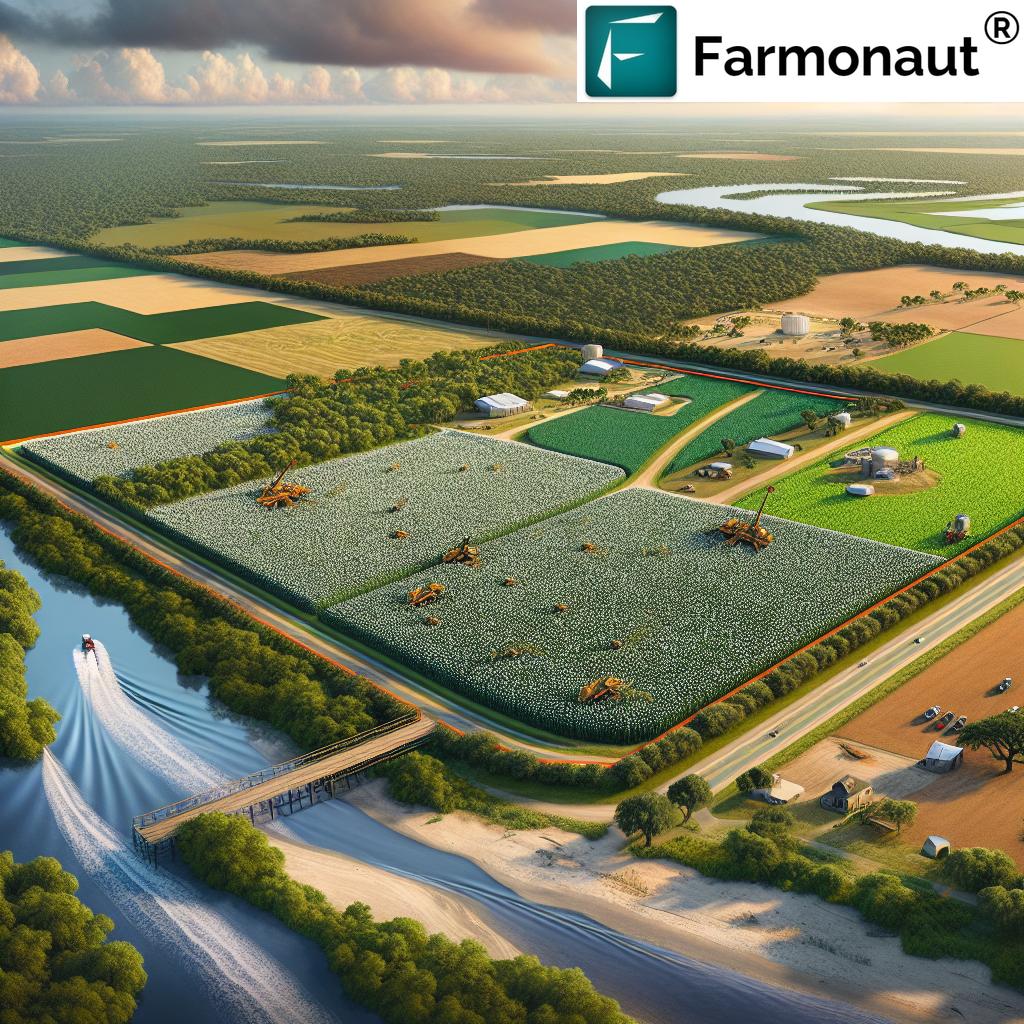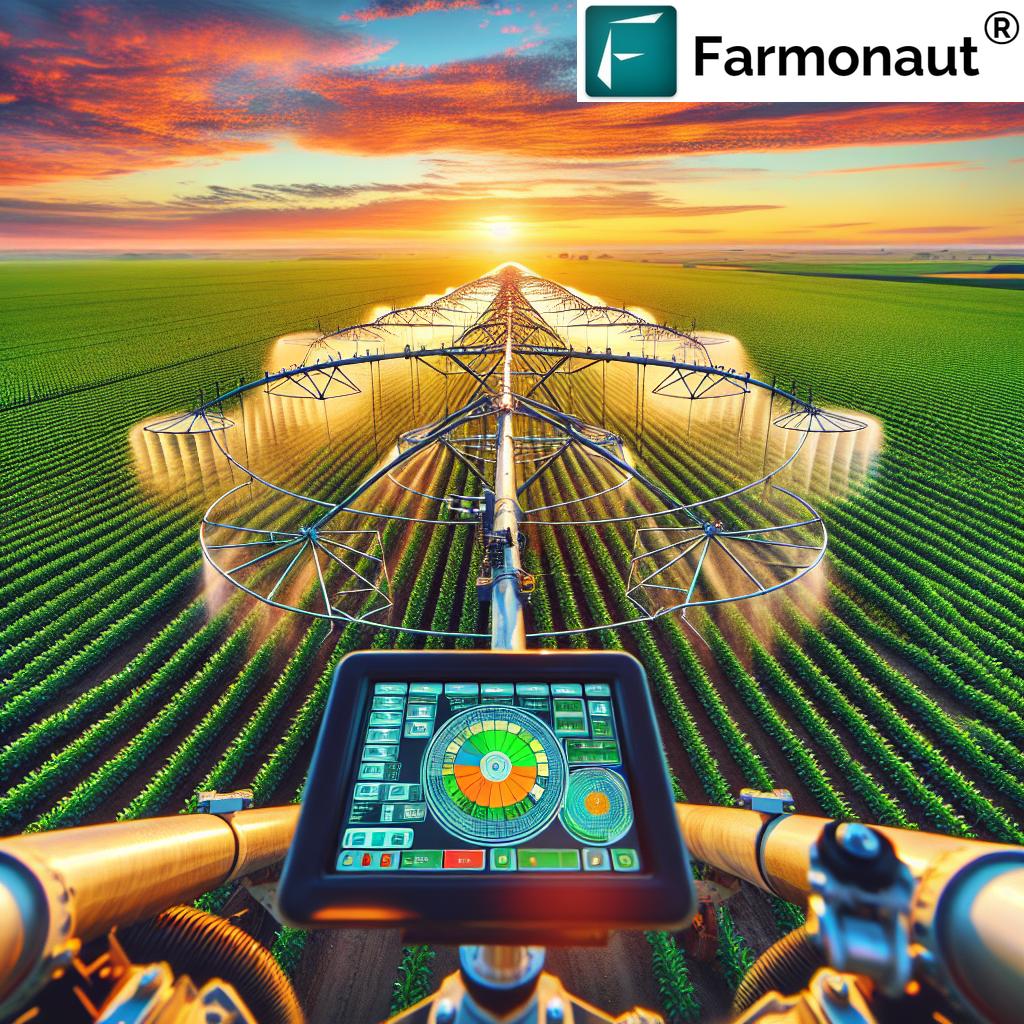Advancing Sustainable Agriculture: Washington’s New Legislation on Precision Farming and Carbon Storage
“Washington’s new legislation promotes a 7-year program for low-emissions construction materials, balancing environmental goals with economic growth.”
“Recent bills emphasize interagency research coordination between key departments, advancing crop science, carbon storage, and precision agriculture.”
In recent weeks, we’ve witnessed a significant shift in Washington’s approach to sustainable agriculture and environmental stewardship. The new legislation passed by Congress marks a pivotal moment in the intersection of technology, agriculture, and environmental conservation. As we delve into these groundbreaking developments, we’ll explore how these changes are set to reshape the landscape of precision farming, carbon storage, and sustainable construction practices.
The Dawn of a New Era in Agricultural Research
The passing of the DOE and USDA Interagency Research Act (H.R. 1326) signifies a monumental step forward in the realm of energy and agriculture research. This act, sponsored by Rep. Frank Lucas, R-Okla., mandates collaboration between the Energy and Agriculture Departments on research and development efforts. The implications of this cooperation are far-reaching and promise to address some of the most pressing challenges in modern agriculture.
- Advancing crop science
- Maximizing carbon storage potential
- Enhancing precision agriculture technologies
The overwhelming support for this bill, with a vote of 372 yeas to 35 nays, underscores the bipartisan recognition of the critical need for innovation in these sectors. As we at Farmonaut continually strive to push the boundaries of agricultural technology, we see this legislation as a catalyst for unprecedented advancements in the field.
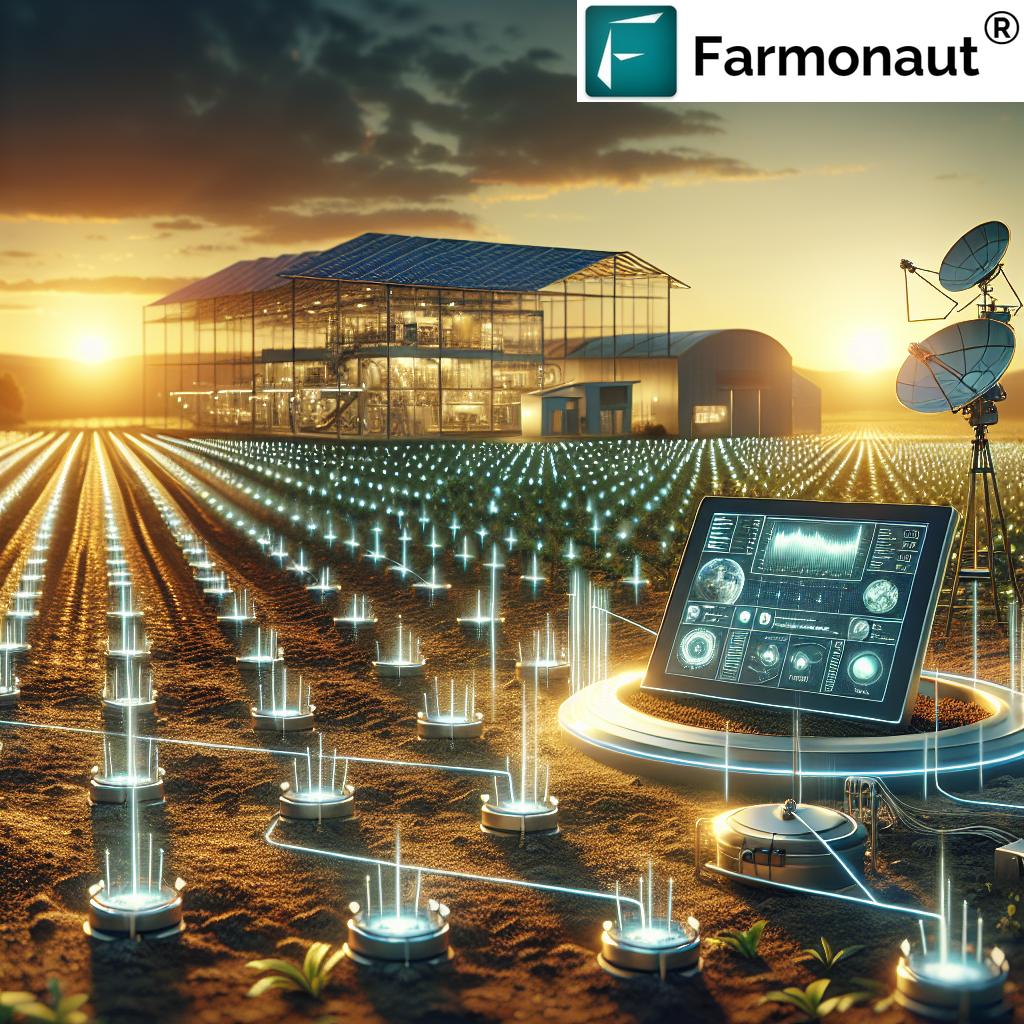
Precision Agriculture: A New Frontier
The emphasis on precision agriculture in this new legislation aligns perfectly with our mission at Farmonaut. Our satellite-based farm management solutions are at the forefront of this technological revolution. By leveraging advanced remote sensing technologies, we provide farmers with real-time crop health monitoring, enabling them to make data-driven decisions that optimize resource use and maximize yields.
The interagency collaboration mandated by this act is likely to accelerate research in areas such as:
- Advanced sensor technologies for soil and crop monitoring
- AI and machine learning algorithms for predictive agriculture
- Integration of satellite data with on-ground farming practices
These advancements will not only boost agricultural productivity but also contribute significantly to sustainable farming practices, reducing the environmental footprint of agriculture.
Carbon Storage: A Key Focus for Sustainable Agriculture
One of the most exciting aspects of the new legislation is its focus on maximizing carbon storage in agricultural practices. This aligns perfectly with global efforts to combat climate change and positions agriculture as a key player in carbon sequestration strategies.
At Farmonaut, we’re particularly excited about the potential of our carbon footprinting technology. This innovative tool allows agribusinesses to monitor and reduce their environmental impact in real-time. By providing accurate data on emissions, we enable farmers and agricultural companies to take concrete steps towards sustainability and compliance with environmental regulations.
The research coordination between the DOE and USDA is expected to yield breakthroughs in:
- Soil carbon sequestration techniques
- Development of carbon-negative crop varieties
- Integration of carbon storage practices with precision agriculture
These advancements could revolutionize how we approach farming, turning agricultural lands into significant carbon sinks while maintaining or even improving productivity.
Remote Sensing: The Eyes in the Sky for Modern Agriculture
The Commercial Remote Sensing Amendment Act (H.R. 1325) is another crucial piece of legislation that will have far-reaching impacts on agriculture. This act aims to provide transparent licensing of commercial remote sensing systems, which is excellent news for companies like Farmonaut that rely heavily on satellite imagery for agricultural monitoring.
Our satellite-based crop health monitoring system uses multispectral satellite images to provide farmers with insights into:
- Vegetation health (NDVI)
- Soil moisture levels
- Pest and disease detection
- Crop yield prediction
The new legislation is likely to streamline access to high-quality satellite data, enabling us to provide even more accurate and timely information to farmers. This, in turn, will lead to more precise decision-making in areas such as irrigation, fertilizer application, and pest management.
Mathematical Modeling: The Backbone of STEM Education in Agriculture
The Mathematical and Statistical Modeling Education Act (H.R. 730) is set to play a crucial role in modernizing mathematics in STEM education through mathematical and statistical modeling. This act recognizes the growing importance of data analysis and modeling in modern agriculture.
At Farmonaut, we understand the critical role of mathematical modeling in precision agriculture. Our AI-driven advisory system, Jeevn AI, relies heavily on complex mathematical models to analyze satellite data and generate personalized farm management advice. The emphasis on mathematical modeling in STEM education will help create a workforce better equipped to handle the challenges of modern, data-driven agriculture.
Key areas where mathematical modeling is revolutionizing agriculture include:
- Crop yield prediction models
- Weather pattern analysis and forecasting
- Optimization of resource allocation in farming
- Predictive maintenance for agricultural machinery
By fostering a deeper understanding of these mathematical concepts among students, we’re paving the way for future innovations in agricultural technology.
Innovative Mitigation: Tackling Emissions in Construction Materials
The Innovative Mitigation Partnerships for Asphalt and Concrete Technologies Act (H.R. 1534) is a groundbreaking piece of legislation that extends beyond agriculture but has significant implications for sustainable practices across industries. This act mandates the Energy Department to develop a seven-year program promoting the manufacture of low-emissions cement, concrete, and asphalt products.
While this may seem unrelated to agriculture at first glance, it’s important to recognize the interconnectedness of sustainability efforts across sectors. The development of low-emissions construction materials could have several positive impacts on agriculture:
- Reduced carbon footprint of farm infrastructure
- Potential for carbon sequestration in agricultural buildings
- Improved sustainability ratings for agribusinesses
At Farmonaut, we see this as an opportunity to expand our carbon footprinting services to include the entire agricultural value chain, from farm to table, including the infrastructure used in farming and food processing.

Interagency Coordination: A Holistic Approach to Agricultural Innovation
The DOE and NASA Interagency Research Coordination Act (H.R. 1368) is yet another piece of legislation that underscores the importance of collaborative efforts in advancing agricultural technology. This act provides for coordination between the Department of Energy and NASA in research and development efforts.
For companies like Farmonaut that rely heavily on satellite technology, this interagency coordination could lead to significant advancements in:
- Higher resolution satellite imagery for crop monitoring
- Advanced sensors for detecting crop stress and soil conditions
- Improved climate modeling for agricultural planning
The synergy between NASA’s space technology and the DOE’s energy expertise could yield breakthrough technologies that revolutionize how we monitor and manage agricultural lands.
The Role of AI and Blockchain in Modern Agriculture
While not explicitly mentioned in the recent legislation, it’s important to note the growing role of AI and blockchain technologies in advancing sustainable agriculture. At Farmonaut, we’re at the forefront of integrating these technologies into our agricultural solutions.
Our AI-driven Jeevn AI advisory system analyzes satellite data and other inputs to provide personalized farm management advice. This technology aligns perfectly with the legislative focus on precision agriculture and data-driven farming practices.
Similarly, our blockchain-based traceability solutions are revolutionizing supply chain management in agriculture. By ensuring transparency and security at every stage of the product journey, we’re helping build trust and reduce fraud in agricultural supply chains.
These technologies have the potential to:
- Optimize resource use in farming
- Enhance food safety and traceability
- Improve decision-making in crop management
- Facilitate more efficient and transparent agricultural markets
As the new legislation fosters innovation in agricultural research, we expect to see even greater integration of AI and blockchain technologies in farming practices.
Empowering Farmers with Technology
The recent legislative actions in Washington underscore a crucial point: the future of agriculture lies in the hands of farmers empowered by technology. At Farmonaut, we’ve always believed in making precision agriculture accessible and affordable to farmers of all scales.
Our platform offers a range of tools that align perfectly with the goals of the new legislation:
- Real-time crop health monitoring
- AI-based advisory systems for farm management
- Fleet and resource management tools
- Carbon footprint tracking for sustainable farming
These tools are accessible through our web and mobile apps, making it easy for farmers to leverage advanced technology in their daily operations. We also offer our services through APIs, enabling integration with other agricultural systems and fostering innovation across the industry.
The Future of Sustainable Agriculture
As we look to the future, it’s clear that the recent legislative actions in Washington are set to accelerate the pace of innovation in sustainable agriculture. The focus on precision farming, carbon storage, and interagency collaboration aligns perfectly with the global need for more sustainable and efficient agricultural practices.
At Farmonaut, we’re excited about the opportunities these developments present. Our commitment to making precision agriculture accessible and affordable to farmers worldwide puts us in a unique position to contribute to this agricultural revolution.
As we continue to innovate and expand our services, we invite farmers, agribusinesses, and agricultural researchers to join us in this journey towards a more sustainable and productive agricultural future.
Key Initiatives in Sustainable Agriculture Legislation
| Legislative Area | Focus | Potential Impact | Estimated Timeline |
|---|---|---|---|
| Precision Farming | Interagency collaboration on research and development | Enhanced crop yields, optimized resource use | 2-5 years |
| Carbon Storage | Maximizing carbon sequestration in agricultural practices | Reduced agricultural emissions, improved soil health | 3-7 years |
| Remote Sensing Technologies | Transparent licensing of commercial remote sensing systems | Improved crop monitoring, early detection of issues | 1-3 years |
| Low-Emissions Construction Materials | Seven-year program for promoting low-emissions cement, concrete, and asphalt | Reduced carbon footprint in agricultural infrastructure | 5-10 years |
Embracing the Future with Farmonaut
As we navigate this exciting new era in sustainable agriculture, Farmonaut stands ready to support farmers and agribusinesses with our cutting-edge technology. Our suite of tools, from satellite-based crop monitoring to AI-driven advisory systems, aligns perfectly with the goals outlined in the recent legislation.
We invite you to explore our solutions and join us in shaping the future of agriculture:
- Farmonaut Web App: Access our full suite of farm management tools
- Android App: Manage your farm on the go
- iOS App: Precision farming at your fingertips
- API Access: Integrate our data into your systems
For those interested in joining our mission to make farming better with satellite data, we also offer an exciting affiliate program. Earn a 20% recurring commission by helping farmers save 10% on our services. By onboarding just 10 Elite farmers monthly, you could earn a minimum of $148,000 annually. It’s an excellent opportunity to grow your income while contributing to sustainable agriculture.
Frequently Asked Questions
- How does the new legislation impact farmers directly?
The legislation promotes research and development in precision farming, potentially leading to more efficient and sustainable farming practices. - What role does remote sensing play in modern agriculture?
Remote sensing technologies provide real-time data on crop health, soil conditions, and weather patterns, enabling more informed decision-making in farm management. - How can farmers benefit from Farmonaut’s technology?
Farmonaut offers satellite-based crop monitoring, AI-driven advisories, and resource management tools that help farmers optimize their operations and increase yields. - What is the significance of carbon storage in agriculture?
Carbon storage in agriculture helps mitigate climate change by sequestering carbon in soil and plants, contributing to more sustainable farming practices. - How does the legislation on low-emissions construction materials relate to agriculture?
While primarily focused on construction, this initiative could lead to more sustainable farm infrastructure and reduce the overall carbon footprint of the agricultural sector.
As we continue to navigate these exciting developments in sustainable agriculture, Farmonaut remains committed to providing cutting-edge solutions that align with the latest legislative initiatives and industry best practices. Together, we can build a more sustainable and productive future for agriculture.
Join us in revolutionizing agriculture with satellite technology. Explore our solutions and start your journey towards more sustainable and efficient farming today.



